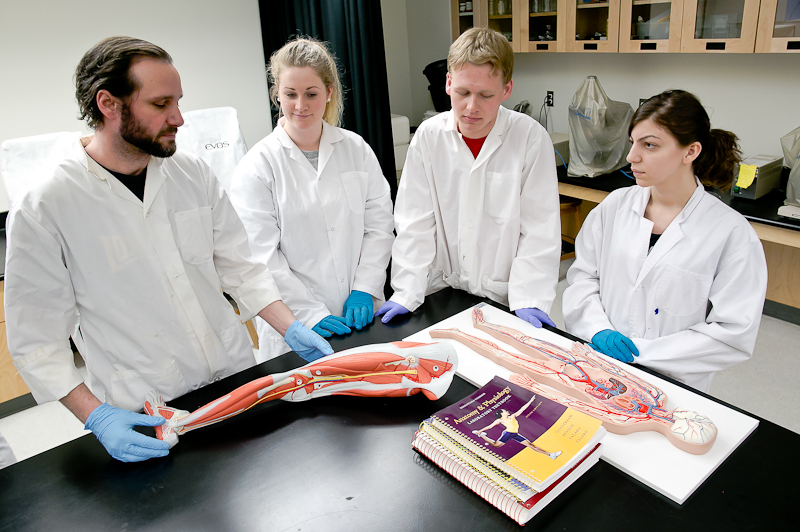Two Carleton professors may soon be bringing high-quality, plastinated dissections of the spinal column and cranial nerves to on-campus labs by using money raised through Carleton’s crowd-funding platform, FutureFunder.
The plastinated models are created with donated human tissue. The end result is the most realistic anatomical model possible, next to an actual cadaver, according to Carleton biology instructor Iain McKinnell, one of the leads on the project.
“The beauty of what we’re trying to aim for here is to obtain models which give us the most broad spectrum of teaching capabilities,” McKinnell said.
McKinnell and his colleague Jeff Dawson started a FutureFunder campaign to put together the money for the specimens. FutureFunder is Carleton’s version of a crowd-funding model, like Kickstarter or Indiegogo, but for academic projects.
McKinnell and Dawson’s project aims to raise $25,000 by late August. In just over a week the campaign has received $610 in donations.
Every year at least 400 students take the classes which would make use of the specimens, McKinnell said.
Students from fields as far apart as neuroscience and engineering have the opportunity to take these courses, Dawson said.
These numbers are expected to increase as Carleton welcomes in a new bachelor of health sciences program in the fall of 2014.
McKinnell and Dawson want to make sure that new students will have access to the best teaching aids available.
“Traditional models are made out of plastic, and sculpted so that they’re more of an artist’s rendition of anatomical features,” Dawson said. “[They’re] lacking in the detail and authenticity that human tissue would give to our students.”
Nerves which are one colour on the model look and feel completely different in a real person, Dawson said.
Plastination preserves and prepares donated bodies to look and feel like a realistic human body, Dawson said.
“In the simplest terms possible, [plastination] is substituting the fat and water molecules with plastic,” McKinnell said. “Plastinated models provide a tactile experience not unlike a real body.”
This is done by applying acetone to replace the water, and a liquid polymer to replace the acetone. The final product is cured using gas, heat, or ultra-violet light for months before the process is finished. Most models last upwards of 10 years, McKinnell said.
Although the FutureFunder has more than 160 days left to donate, students are already pitching in to make the campaign a success.
“It’s important for students at university to access advanced technologies,” said fourth-year biology major and project backer Kendra Young. “This is knowledge and insight which will carry on to our careers.”
McKinnell said he hopes for students to begin working with the models by the end of 2015.






